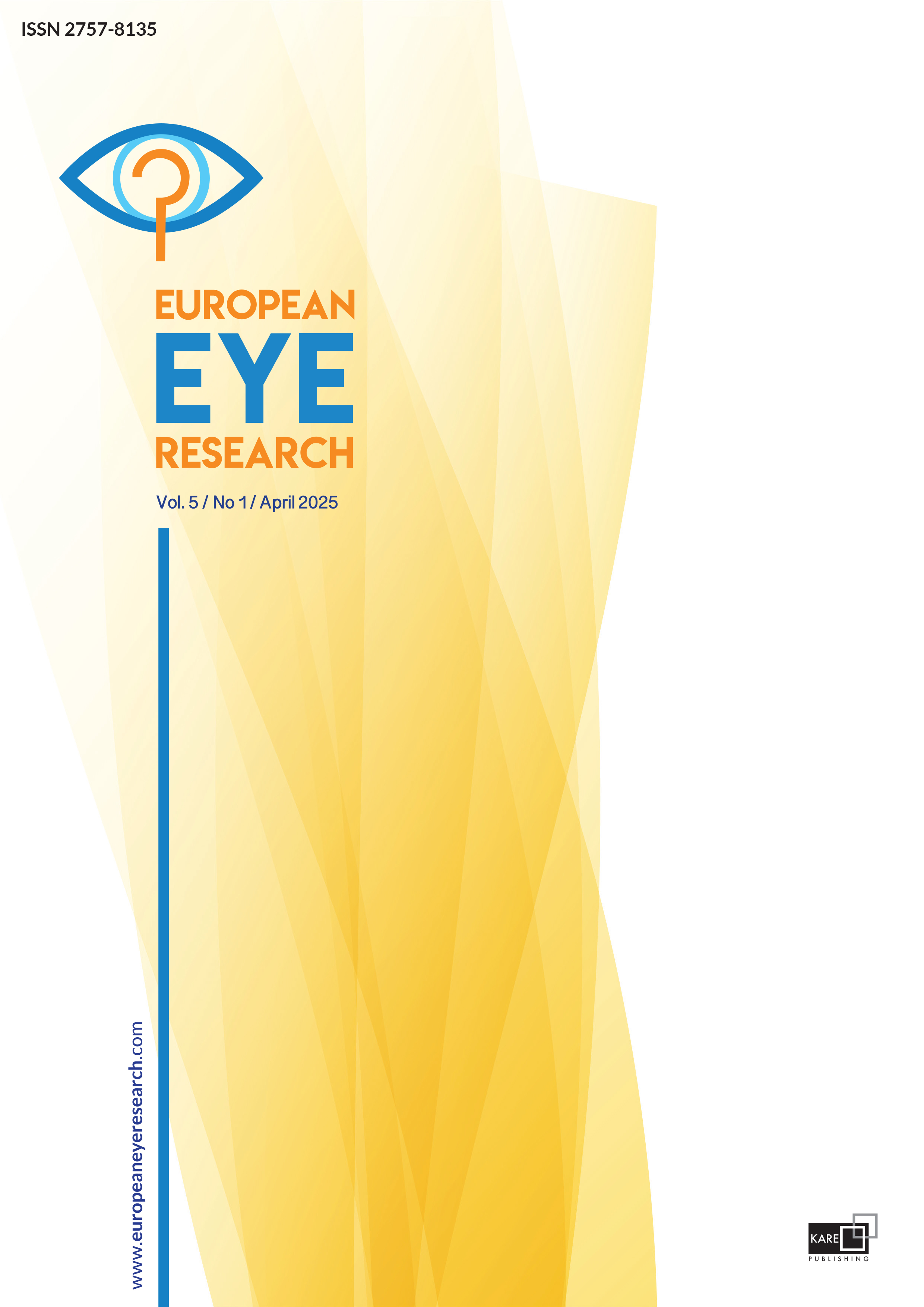

Evaluation of the optic disk and macular vessel density in inactive thyroid eye disease using optical coherence tomography angiography
Zeynep Yilmaz, Ayse Burcu Dirim, Ibrahim Cagri Turker, Selam Yekta Sendul, Mehmet Demir, Emine Betul Akbas Ozyurek, Dilek GuvenDepartment of Ophthalmology, University of Health Sciences, Sisli Hamidiye Etfal Training and Research Hospital, Istanbul, TürkiyePURPOSE: The purpose of the study was to evaluate the vascular density (VD) in the optic disk (OD) head and macula by optical coherence tomography angiography (OCT-A) in patients with inactive thyroid eye disease (TED), as well as the rela-tionship between extraocular muscle (EOM) thickness and the VD of the retina and OD.
METHODS: The study group and control group each consisted of 65 eyes of 65 participants. The foveal, parafoveal, and per-ifoveal VD were examined for both superficial capillary plexus and deep capillary plexus. In addition, choriocapillaris flow, foveal avascular zone (FAZ) areas, and the perimeter were calculated. The thicknesses of the peripapillary retinal nerve fiber layer (RNFL) and VD were recorded. EOM thickness was measured with magnetic resonance imaging.
RESULTS: VD was significantly lower in all quadrants for the superficial foveal areas, as well as the deep and superficial para-foveal and perifoveal areas in the study group (p<0.05 for all). The study group had significantly lower choriocapillaris flow area (2.08±0.1; 2.12±0.10 p=0.049) and higher FAZ (0.29 (0.22–0.36); 0.26 (0.17–0.32) p=0.037) and perimeter (2.08±0.46; 1.92±0.35 p=0.03) values compared with the controls. VD was higher in the inferior half of the peripapillary region in the study group than the controls (p=0.045).
CONCLUSION: Macular VD measured using OCT-A was found to be significantly lower in TED patients compared to healthy controls. It is thought that noninvasive quantitative retinal perfusion analysis using OCT-A may be useful in the follow-up of TED, close monitoring of complications, and early treatment decision.
Manuscript Language: English



